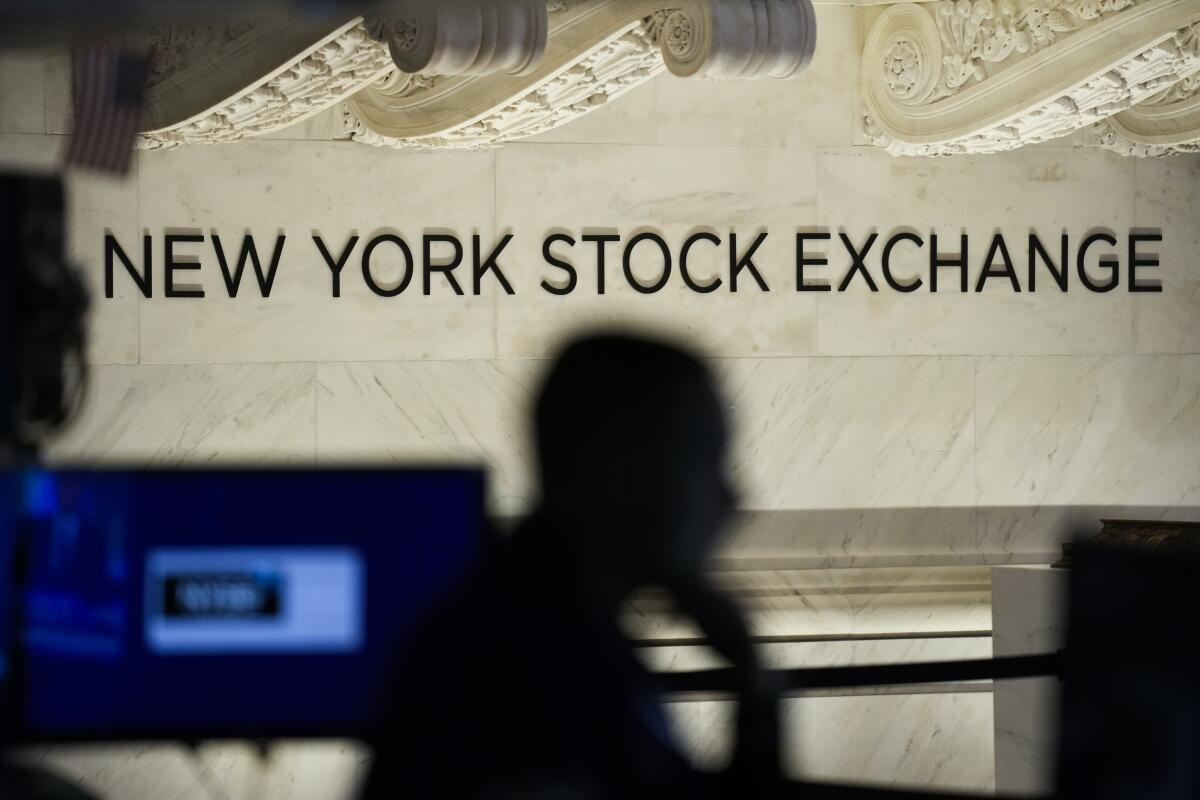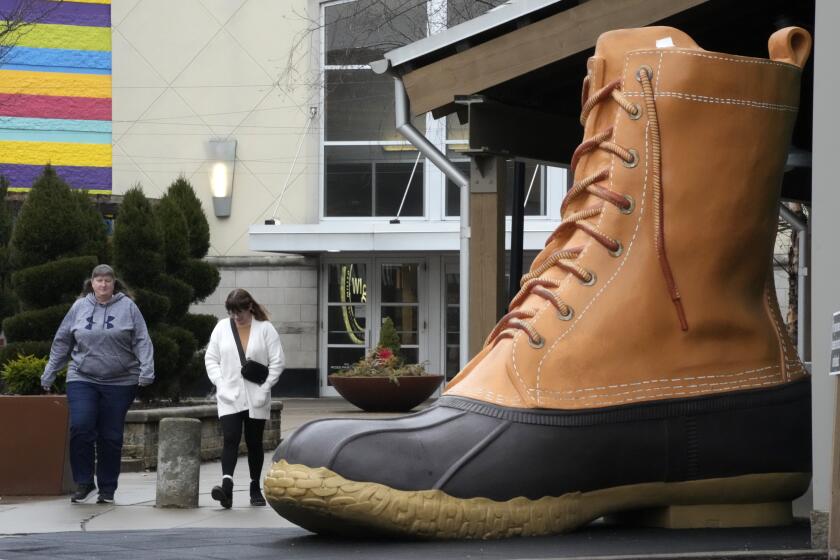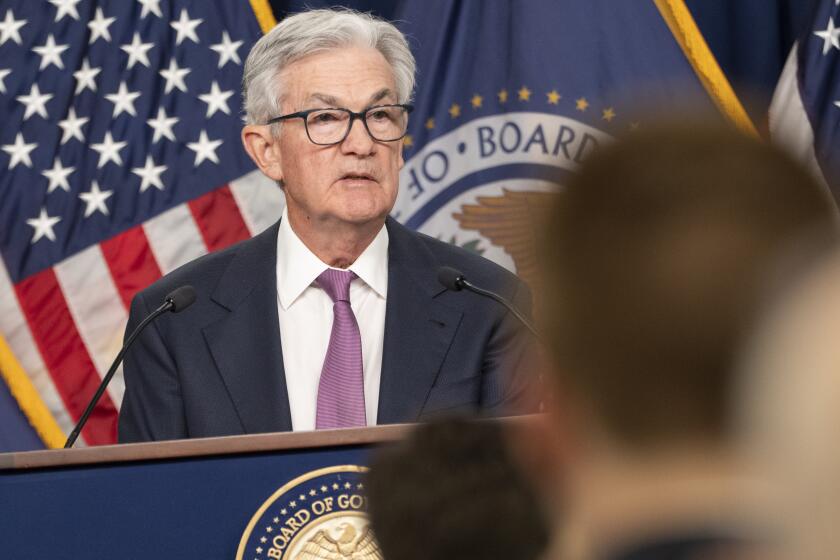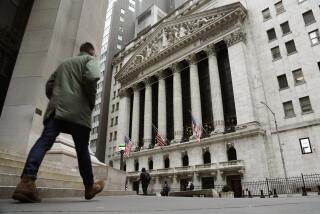Wall Street has its worst week since December as stocks drop

- Share via
Another cold reminder that inflation remains hotter than hoped sent Wall Street skidding Friday, and stocks closed out their worst week since early December.
The Standard & Poor’s 500 fell 1.1% to cap its third straight weekly loss. The Dow Jones industrial average dropped as many as 510 points before closing down 336 points, or 1%, while the Nasdaq composite lost 1.7%.
Stocks have dropped through February as a stream of reports has shown that inflation, the job market and spending by shoppers are all staying hotter than expected. That has forced Wall Street to raise its forecasts for how high the Federal Reserve will have to take interest rates and then how long it will keep them there.
Higher rates can drive down inflation, but they also raise the risk of a recession because they slow the economy. They likewise hurt prices for stocks and other investments.
The latest reminder came Friday after a report showed that the measure of inflation preferred by the Fed came in higher than expected. It said prices were 4.7% higher in January than a year earlier, after ignoring costs for food and energy because they can swing more quickly and sharply than others. That was an acceleration from December’s inflation rate, a move in the wrong direction, and it was higher than economists’ expectations for 4.3%.
America’s consumers rebounded last month from a weak holiday shopping season by boosting their spending at stores and restaurants at the fastest pace in almost two years.
It echoed other data from earlier in the month that showed inflation at both the consumer and wholesale levels was higher than expected in January.
Other data Friday also showed that consumer spending returned to growth in January, rising 1.8% from December. That’s pivotal because spending by consumers makes up the largest piece of the economy. A separate reading on sentiment among consumers came in slightly stronger than earlier thought, while sales of new homes improved a bit more than expected.
Such strength paired with the remarkably resilient job market raises hope that the economy can avoid a recession in the near term.
But it also can feed into upward pressure on inflation, and Wall Street worries it could push the Fed to raise rates even higher and keep them there even longer than it otherwise would.
“It puts the final nail in the coffin in the shift we’ve seen the last several weeks where the market has come around to what the Fed has been saying for a while: rates above 5% and there for longer,” said Ross Mayfield, investment strategy analyst at Baird.
Nearly all Fed policymakers agreed this month to slow the pace of interest rate increases to a quarter-point, with ‘a few’ supporting a larger hike.
After earlier doubting that the Fed would raise its key overnight rate as high as it was saying, and believing that it may even cut rates later this year, traders are increasing bets on the Fed’s rate rising to at least 5.25% and staying that high through the end of the year.
It’s in a range of 4.50% to 4.75%, and it was at virtually zero a year ago.
High rates and inflation increase the risk of a recession down the line, even if the most important part of the economy has been resilient.
“The consumer is hanging in there, but the consensus seems to be there’s a lot of trading down” by shoppers to less-expensive items, Mayfield said. “If you’re looking out a year and banking on the consumer sector to hang in there, every extra month it becomes a dicier proposition.”
He expects the economy’s growth to fall below its long-term trend if not fall into a minor recession, though he’s not anticipating a worst-case downturn.
Expectations for a firmer Fed have caused yields in the Treasury market to shoot higher this month, and they climbed further Friday.
The yield on the 10-year Treasury rose to 3.94% from 3.89% late Thursday. It helps set rates for mortgages and other important loans. The two-year yield, which moves more on expectations for the Fed, rose to 4.79% from 4.71%.
Tech and high-growth stocks once again took the brunt of the pressure. Investments seen as the most expensive, the riskiest or making their investors wait the longest for big growth are among the most vulnerable to higher rates.
Microsoft, Apple, Amazon and Tesla all fell at least 1.8% and were the heaviest weights on the S&P 500 because their immense size gives them more sway on the index.
Software company Autodesk fell to the largest loss in the index, down 12.9% despite reporting stronger profit and revenue for the latest quarter than expected. Analysts said investors were disappointed with its forecasts for upcoming results.
Boeing lost 4.8% after it stopped deliveries of its 787 passenger jet because of questions around a supplier’s analysis of a part near the front of the plane.
All told, the S&P 500 fell 42.28 points to 3,970.04. The Dow dropped 336.99 points to 32,816.92, and the Nasdaq fell 195.46 points to 11,394.94.
Stock markets abroad also mostly fell, with a 1.8% drop for France’s main index and a 1.7% fall in Hong Kong.
Japan’s Nikkei 225 was an outlier, rising 1.3%. The nominee to head the country’s central bank, economist Kazuo Ueda, told lawmakers he favors keeping Japan’s benchmark interest rate near zero to ensure stable growth. That’s despite Japan reporting its core consumer price index, excluding volatile fresh foods, rose the most in 41 years in January.
AP business writers Elaine Kurtenbach, Matt Ott and Yuri Kageyama contributed to this report.
More to Read
Inside the business of entertainment
The Wide Shot brings you news, analysis and insights on everything from streaming wars to production — and what it all means for the future.
You may occasionally receive promotional content from the Los Angeles Times.












